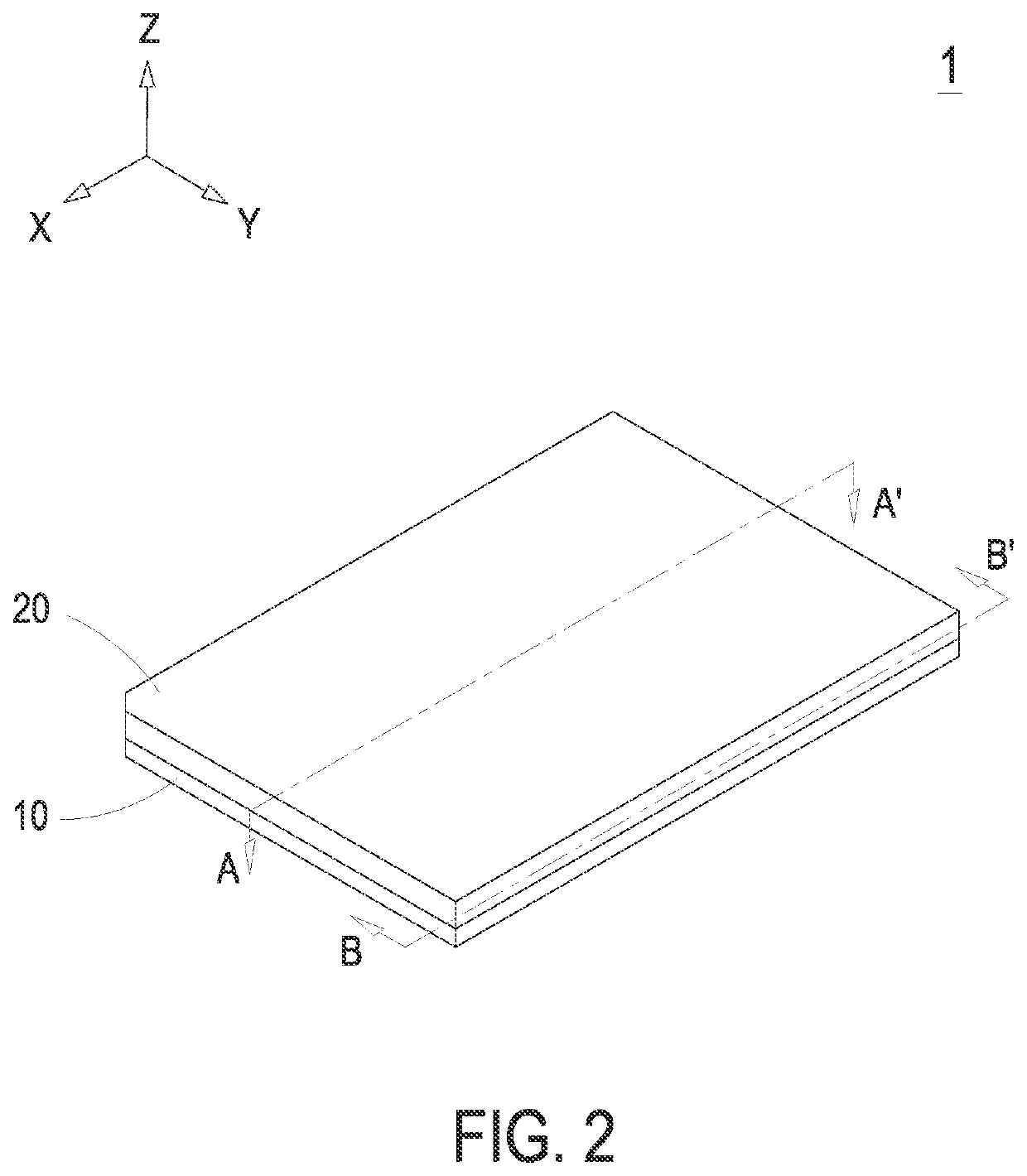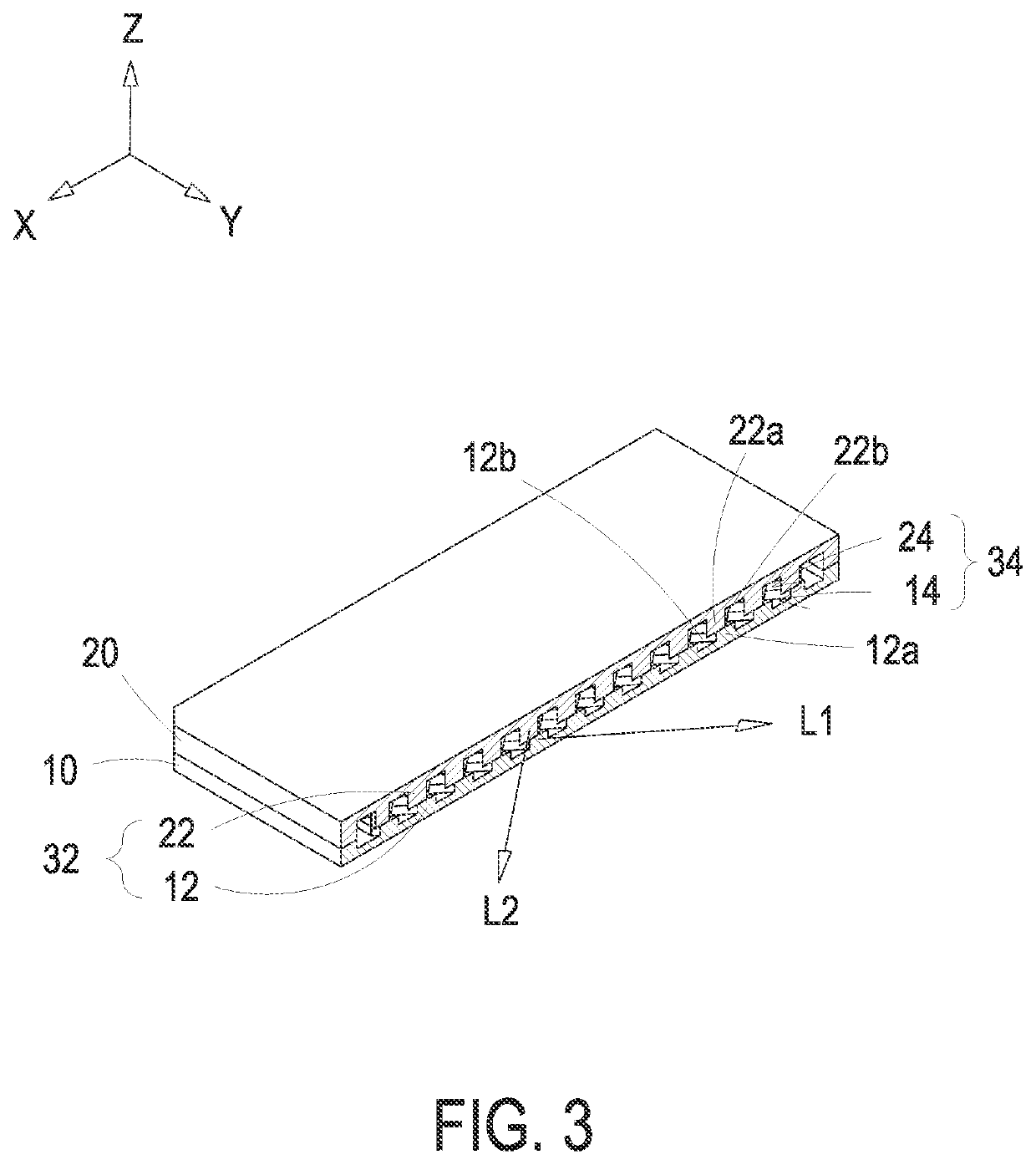Thin vapor-chamber structure
- Summary
- Abstract
- Description
- Claims
- Application Information
AI Technical Summary
Benefits of technology
Problems solved by technology
Method used
Image
Examples
Embodiment Construction
[0034]The present disclosure will now be described more specifically with reference to the following embodiments. It is to be noted that the following descriptions of preferred embodiments of this disclosure are presented herein for purpose of illustration and description only; it is not intended to be exhaustive or to be limited to the precise form disclosed.
[0035]FIG. 1 shows an exploded view of the thin vapor-chamber structure according to a first embodiment of the present disclosure. FIG. 2 shows a perspective view of the thin vapor-chamber structure according to the first embodiment of the present disclosure. FIG. 3 shows a cross-sectional view of the thin vapor-chamber structure of FIG. 2 taken along the line A-A′. FIG. 4 is a lateral view of FIG. 3. FIG. 5 shows a cross-sectional view of the thin vapor-chamber of FIG. 2 taken along the line B-B′. FIG. 6 is a top view of FIG. 5. In the embodiment, the thin vapor-chamber structure 1 includes a first cover 10, a second cover 20 ...
PUM
 Login to View More
Login to View More Abstract
Description
Claims
Application Information
 Login to View More
Login to View More - R&D
- Intellectual Property
- Life Sciences
- Materials
- Tech Scout
- Unparalleled Data Quality
- Higher Quality Content
- 60% Fewer Hallucinations
Browse by: Latest US Patents, China's latest patents, Technical Efficacy Thesaurus, Application Domain, Technology Topic, Popular Technical Reports.
© 2025 PatSnap. All rights reserved.Legal|Privacy policy|Modern Slavery Act Transparency Statement|Sitemap|About US| Contact US: help@patsnap.com



